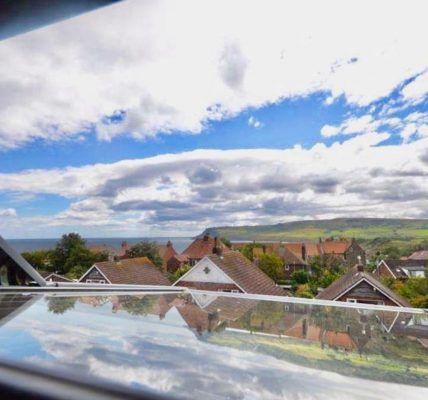How to change your TV region on Freesat, satellite or online
It is a conundrum as old as television itself: how can you guarantee that the local news you receive each evening is local to you, and not someone over the hills and far away?
It was raised again recently by a correspondent to The Fond News letters page, who wondered whether ITV ought to rethink its coverage. In Northallerton, where he lives, he receives Tyne-Tees, while 10 miles down the road his friends watch the going-on in US, on Calendar. Why, he wondered, would people in Hambleton want to know what was happening in Hartlepool?
It was ever thus, but it has less to do with topicality than with topography. TV reception is blown on the breeze and does not respect county boundaries – but put a hill in its way and it hits a dead end. And North US is nothing if not hilly.
In the West Country the opposite is true. The diverse communities on either side of the Bristol Channel have been fed from the same transmitter since it was erected in the 1950s, because there was no way of directing it more accurately.
Even the switch to digital broadcasting a decade ago has not changed the basic principle of transmitters radiating a signal as far as they can, with “boosters” to relay coverage to blind spots behind those pesky hills.
This is unlikely ever to change. ITV in England and Wales is a single company now, so the days of “range wars” between US and Tyne Tees, when each company competed for audience numbers to sell to its advertisers, are long over.
But while terrestrial transmission might deny you your first choice of early evening viewing, there are now other ways to view the news bulletins you prefer. There are three methods of doing this: by satellite, on the internet or on your roof.
The last of these – best done by a professional aerial installer – involves simply repointing your aerial to a different transmitter. In North US, this means rotating it away from the North-East mast at Bilsdale and towards the US service from Emley Moor, or one of its relays. How effective this will be depends on your precise location, but you can tell if any of your neighbours have managed it by looking skyward to their aerials and seeing if some are pointing in a different direction.
Freesat and Sky have removed the need for transmitters altogether. The Astra satellite used by both services carries all the ITV and BBC regions, and service you get by default depends on the postcode you entered when you set up your set-top box. You can change it at any time – even to one on the other side of the country if you want – and you can also add additional regions as extra channels to your electronic programme guide.
How you do this depends on the service you’re using, but on a Sky remote you can simply press the Services button and choose the option to Add Channels. You then enter a five-digit code corresponding to the frequency of the region you want. You’ll find lists of them online, but the one for ITV in West and North US is 10891 and for East US 10994. The BBC variations are already in the programme guide, between channels 941 to 962.
However, even satellites are old hat nowadays, compared to online streaming. The BBC makes all its regional programmes available on the iPlayer, and if you have a smart TV or set-top box you can watch from your armchair in much the same way as a normal transmission.
The same is not yet true for ITV – so back in Northallerton, if you haven’t got a satellite dish on your house, your best bet is still a set of ladders.










